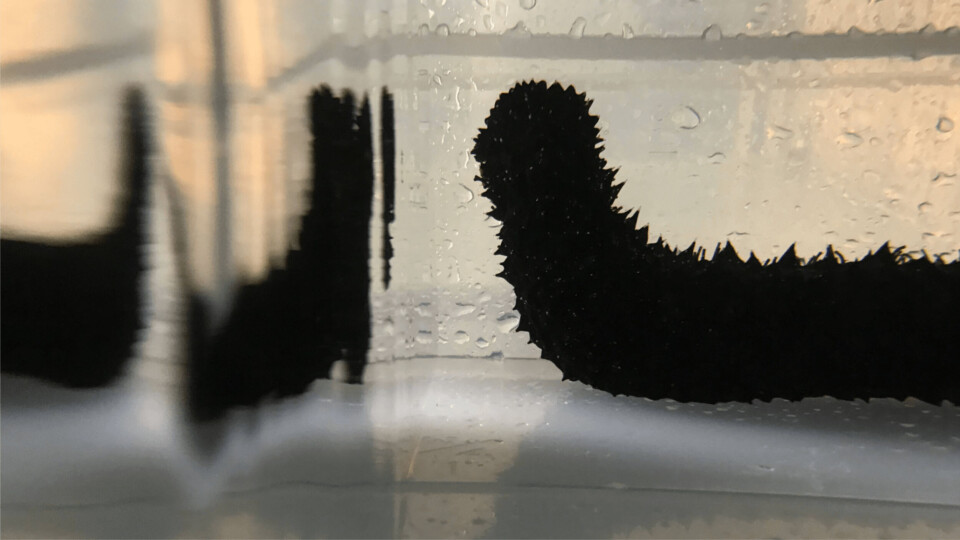
Can sea cucumbers increase salmon production by 20%?
A start-up company investigating whether sea cucumbers could allow a potential 20%-plus production growth at Scottish salmon farms by consuming fish faeces and uneaten feed beneath pens has won funding £46,449 for a feasibility study.
The use of sea cucumbers for bioremediation – the process of using living organisms to remove pollutants and toxins – has already been proven in Asia and Chile, but the role of sea cucumbers in Scottish and European aquaculture is yet to be fully tested.
Blue Remediation will build a computer model that integrates with existing NewDEPOMOD software, which is used by the salmon farming sector to predict the impact of organic material on the seabed beneath pens.
Sustainable alternative
The company has received funding the UK Seafood Innovation Fund, with additional support from the Sustainable Aquaculture Innovation Centre (SAIC).
In its summary on the UK Seafood Innovation Fund website, Blue Remediation says its goal is to have the computer model approved by the government, thereby offering farmers a sustainable alternative to reduce their seabed impact, a factor currently limiting fish production.
“By adopting bioremediation, farms’ finfish production will significantly increase (by >20%) without consequences for the seabed, leading to an improved situation for both industries and the environment,” stated the company.
Absorption efficiency
The study will test a number of variables, such as sea cucumber absorption efficiency and benthic waste accumulation, to find the optimum conditions for sea cucumbers and the number that salmon producers could then introduce to minimise the impact of waste.
The experimental part of the project will be carried out in collaboration with the Scottish Association for Marine Science (SAMS) led by Dr Georgina Robinson with support from SAMS scientists.
Initial testing is expected to last for three months using 18 Scottish sea cucumbers fed a variety of diets to represent how cucumbers would behave in a real-world fish farm environment. Sediment from Mowi’s Loch Leven site, and salmon faeces from the University of Stirling’s Institute of Aquaculture are being used mimic the natural ecosystem.
Environmental impact
Soizic Garnier, co-founder of Blue Remediation, said: “Managing and minimising the environmental impact of aquaculture is crucial for supporting the sector’s growth. Alongside the extensive regulatory frameworks that are in place, we have identified a possible natural solution that could absorb some of the waste that is inevitably produced by fish and the process of feeding them.
“Using sea cucumbers in Scottish waters has great potential, but there are still a number of questions that we need to find the answers to. This study and subsequent live trials will help to determine the impact of integrating different species, any impact on wild cucumbers, as well as monitoring the health and wellbeing of the sea cucumbers, including disease control.
“Sea cucumbers are considered a delicacy in Asia and can fetch up to $3,000 per kilo, so there may also be added value in mainstream sea cucumber cultivation, hand in hand with the environmental benefits.”
A real opportunity
Blue Remediation was set up by a team of four PhD students from the University of Strathclyde and Heriot-Watt University, who last year took part in a mentoring programme led by Women in Scottish Aquaculture (WiSA) to help formulate their project ideas. Read more about them here.
SAIC chief executive Heather Jones said: “There is a real opportunity to build sustainable aquaculture systems in Scotland that will support the world’s increasing demand for protein.
“With research projects exploring cost-effective, data-led methods, such as using sea cucumbers, we could transform the sector’s approach to waste management. Integrated multi-trophic aquaculture is still in its infancy in Scotland, but could be a valuable, sustainable, circular method of ensuring resources don’t go to waste.”























































